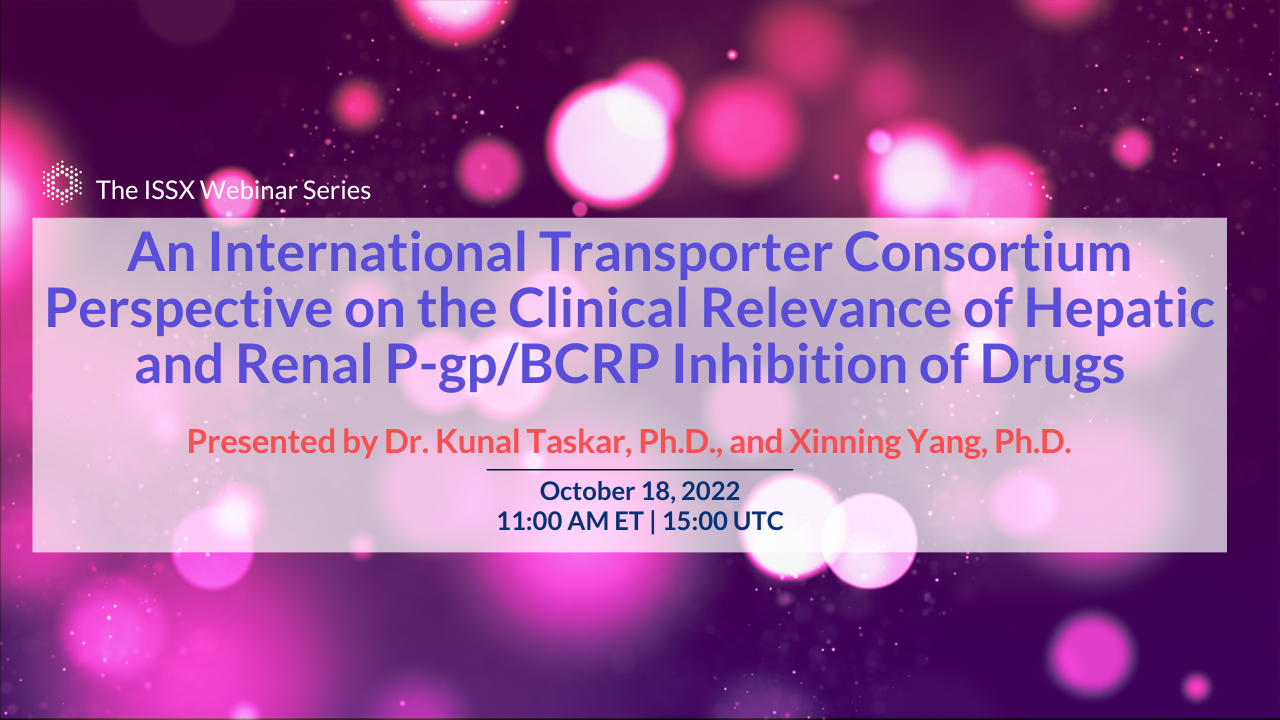
An International Transporter Consortium Perspective on the Clinical Relevance of Hepatic and Renal P-gp/BCRP Inhibition of Drugs | Drs. Kunal Taskar and Xinning Yang
-
Register
- Non-member - $49
- Member - Free!
- Student - Free!
- Premier - Free!
The role of P-glycoprotein (P-gp) and breast cancer resistance protein (BCRP) in drug-drug interactions (DDIs) and restricting intestinal absorption and brain penetration of substrate drugs is well known. The present webinar will elaborate and discuss specifically the hepatic and renal P-gp/BCRP (referred as systemic) inhibition of drugs and subsequent consequences on the disposition of substrate drugs. To evaluate the clinical relevance of P-gp and BCRP inhibition in liver and kidney, our approach includes (1) Evaluation of DDIs involving intravenously administered P-gp/BCRP substrates or inhibitors; (2) in vitro-to-in vivo extrapolation (IVIVE) of P-gp- mediated DDIs at the systemic level; and (3) curation of substrate drugs with information available on changes of biliary and urinary excretion and related DDIs. Based on our analysis on clinical studies reported to date, limited DDI risk upon P-gp or BCRP inhibition in liver or kidney is expected in humans. An increase in the systemic concentration of substrate drugs, due to hepatic and renal inhibition of P-gp and BCRP, is expected to be less than two-fold. Nevertheless, for P-gp substrates with narrow therapeutic windows (e.g., digoxin, doxorubicin), the DDI risk of a P-gp-inhibitor that is administered by a non-oral route could not be ignored. To evaluate such a potential DDI, the ratio of unbound Cmax to IC50 or Ki, with a cut-off of 0.02 could be calculated. If the ratio is less than the cut-off, then risk can be ruled out. If not, further evaluation is warranted and the decision on whether to follow up with a clinical DDI study will depend on the likelihood of concomitant use of the inhibitor with P-gp-substrates, whether there are other interacting mechanisms besides P-gp inhibition, and the safety margin of P-gp substrates. It should be noted that inhibition of P-gp or BCRP in liver and/or kidney may not always be reflected by changes in the systemic exposure to substrates. In such cases, modelling and simulation approaches involving IVIVE linked PBPK models may be employed to predict the hepatic/renal cell concentration of the P-gp/BCRP substrate/inhibitor drugs and establish correlations with their systemic, urinary, and/or pharmacodynamic effects if suitable.
